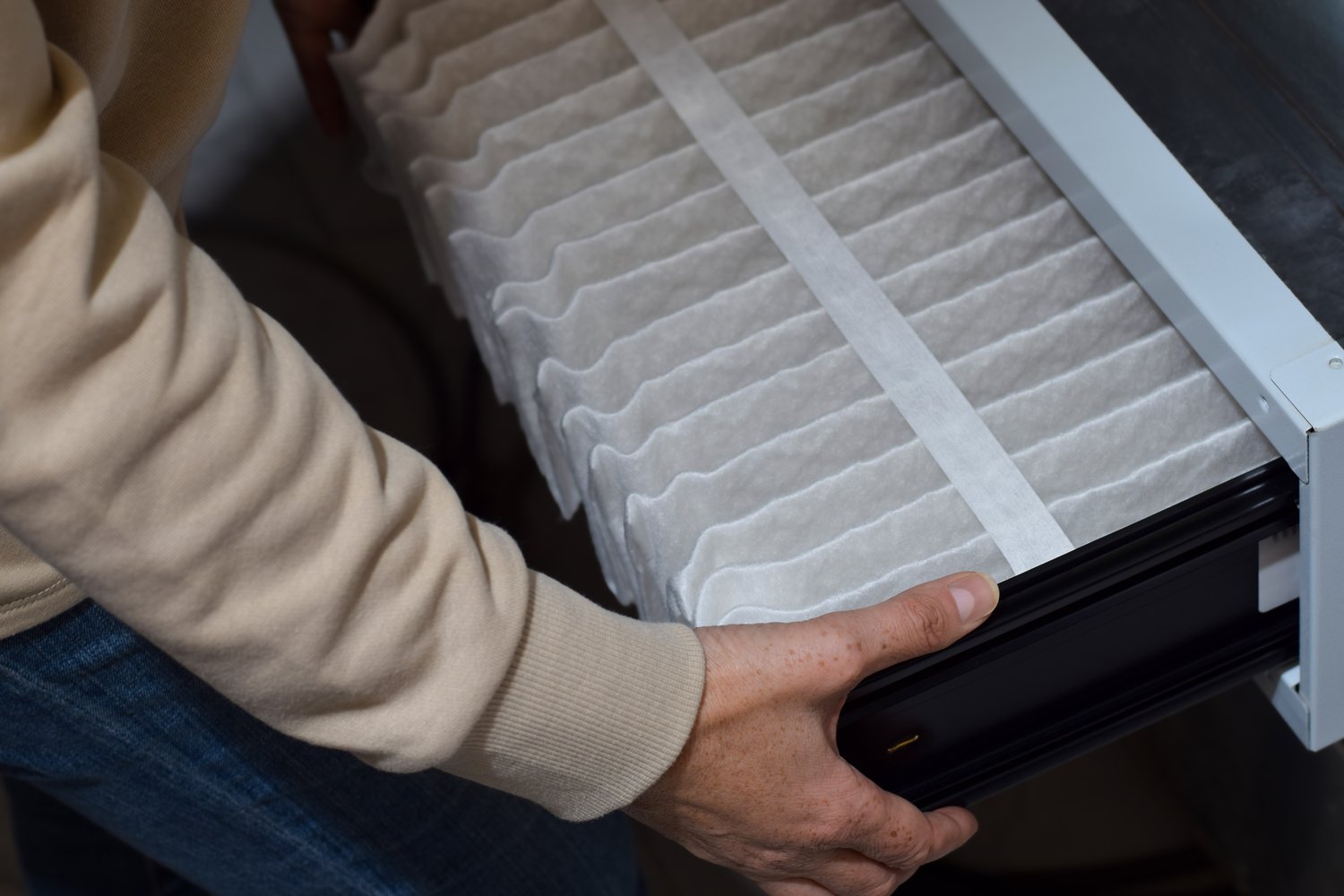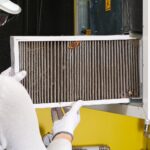Is your furnace working harder than it should, or are you noticing a rise in dust around your home? The cause might be as simple as an overdue furnace filter replacement. Regular maintenance of your furnace filter can significantly enhance your home’s air quality and improve the efficiency of your heating system.
- Grasp the importance of different furnace filter types and their role in your heating system’s performance.
- Identify signs like reduced airflow and increased dust accumulation that indicate it’s time for a filter replacement.
- Follow a comprehensive guide to confidently replace your furnace filter, ensuring it fits well and functions optimally.
By understanding and maintaining your furnace filter, you ensure clean air and efficient heating, providing comfort during colder months. Continue reading to gain detailed insights and step-by-step instructions that empower you to keep your home environment at its best.
Understanding Your Furnace Filter: A Comprehensive Furnace Filter Replacement Guide
Furnace filters are a crucial component of your home’s heating system, playing a central role in maintaining indoor air quality and system efficiency. Understanding the different types of furnace filters available can help homeowners make informed decisions, ensuring effective furnace filter replacement practices.
Furnace filters are categorized based on their material, efficiency, and design:
- Fiberglass Filters: These are inexpensive and disposable, primarily designed to protect the furnace itself, but offer minimal air purification.
- Pleated Filters: Made of polyester or cotton, pleated filters trap more particles, improving air quality significantly.
- Electrostatic Filters: Made of self-charging fibers, these filters use static electricity to attract airborne particles, offering high filtration efficiency.
- HEPA Filters: Known for their superior air filtering capabilities, HEPA filters capture over 99% of particles, including allergens and pollutants, but are not always compatible with all heating systems.
Choosing the right type of furnace filter depends on the specific needs of your household, including considerations for allergy sufferers and the local environment.
Properly understanding these distinctions sets the stage for efficient furnace filter replacement, ensuring your heater operates at peak performance while maintaining a clean and healthy atmosphere in your home.
Signs It’s Time to Replace Your Furnace Filter
Recognizing the telltale signs of a worn-out furnace filter is essential for maintaining both energy efficiency and air quality in your home. A clogged or dirty filter can lead to a variety of issues, making it critical to replace your furnace filter regularly.
Some common indicators that it is time for a furnace filter replacement include:
Reduced Airflow: If you notice that your furnace isn’t blowing air as forcefully as it used to, a clogged filter could be the culprit. Restricted airflow forces your system to work harder, leading to higher energy consumption and potential wear and tear.
Increased Dust Accumulation: Pay attention if household surfaces seem dustier than usual. Ineffective filters allow more dust and debris to circulate through your home, highlighting the need for a new furnace filter.
Unpleasant Odors: Musty or stale smells emanating from your vents could indicate an overloaded filter, harboring trapped particles that affect indoor air quality.
Higher Energy Bills: A sudden spike in your energy costs can also be a signal. The furnace has to work much harder to push air through a dirty filter, resulting in increased utility bills.
By staying vigilant and understanding these markers, you ensure timely replacement of your furnace filter, benefiting both your home’s air quality and your wallet.
Step-by-Step Furnace Filter Replacement Guide: Ensuring Efficiency and Clean Air
Replacing your furnace filter is an essential task to enhance your home’s air quality and heating system efficiency. Follow these steps to make sure your filter replacement is effective and seamless.
Select the Right Furnace Filter: Start by determining the correct filter size for your furnace. Check the specifications on your current filter or consult your furnace manual. Choose a filter with a suitable MERV (Minimum Efficiency Reporting Value) rating that balances air quality improvements with minimal airflow restriction.
Turn Off Your Furnace: For safety reasons, switch off your furnace before starting the replacement process. This prevents the system from running while you work and ensures your safety during the change.
Remove the Old Filter: Open the access panel on your furnace to locate the filter. Gently slide out the old filter, taking care not to disperse trapped dust and debris. Inspect it for any unusual dirt buildup, which can indicate other maintenance needs.
Insert the New Filter Correctly: Position the new filter in the same orientation as the old one, ensuring it fits snugly within the prepared slot. Pay attention to the arrows on the filter frame, which indicate the correct airflow direction. Proper alignment ensures maximum efficiency and performance.
Secure the Access Panel: Once the filter is in place, close the access panel securely. Verify there are no gaps or loose fittings that might affect your system’s function.
Restart Your Furnace: After replacing and securing the filter, restore power to your furnace. Monitor its operation to ensure the system runs smoothly and that there’s improved airflow throughout your home.
By regularly undertaking these steps, you can maintain a cleaner, more efficient heating system, contributing to healthier indoor air quality. Feel free to share any unique methods or suggestions you have for dealing with furnace filter replacements.
FAQs on Furnace Filter Replacement
How often should I replace my furnace filter?
For optimal performance, replace your furnace filter every 1 to 3 months.
What are the signs that my furnace filter needs replacing?
Look for signs like reduced airflow, increased dust around your home, or a visibly dirty filter.
Can I use a filter with a higher MERV rating?
Yes, but ensure your furnace can handle it without reducing airflow or efficiency.
How do I know the correct filter size for my furnace?
Check the existing filter for size labels or refer to your furnace’s user manual.
What are the different types of furnace filters available?
- Fiberglass: Basic filters offering minimal filtration.
- Pleated: Higher efficiency with better dust trapping capabilities.
- Electrostatic: Good for homes with pets or allergies.
Can I clean and reuse a furnace filter?
Only if it’s specifically labeled as a washable filter. Most are disposable.





